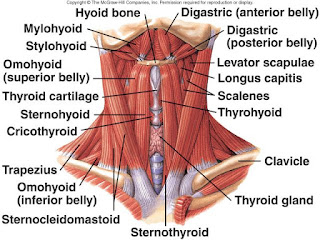DEPRESSION
Depression (major depressive disorder) is a common and serious
medical illness that negatively affects how you feel, the way you think and how
you act. Fortunately, it is also treatable. Depression causes feelings of
sadness and/or a loss of interest in activities once enjoyed. It can lead to a
variety of emotional and physical problems and can decrease a person’s ability
to function at work and at home.
- Feeling
sad or having a depressed mood
- Loss
of interest or pleasure in activities once enjoyed
- Changes
in appetite — weight loss or gain unrelated to dieting
- Trouble
sleeping or sleeping too much
- Loss
of energy or increased fatigue
- Increase
in purposeless physical activity (e.g., hand-wringing or pacing) or slowed
movements and speech (actions observable by others)
- Feeling
worthless or guilty
- Difficulty
thinking, concentrating or making decisions
- Thoughts
of death or suicide
How Is Depression Treated?
Depression is among the most treatable of mental disorders. Between 80 percent and 90 percent of people with depression eventually respond well to treatment. Almost all patients gain some relief from their symptoms.
Before a diagnosis or treatment, a health professional should conduct a thorough diagnostic evaluation, including an interview and possibly a physical examination. In some cases, a blood test might be done to make sure the depression is not due to a medical condition like a thyroid problem. The evaluation is to identify specific symptoms, medical and family history, cultural factors and environmental factors to arrive at a diagnosis and plan a course of action.
Medication:
Brain chemistry may contribute to an individual’s depression and may factor into their treatment. For this reason, antidepressants might be prescribed to help modify one’s brain chemistry. These medications are not sedatives, “uppers” or tranquilizers. They are not habit-forming. Generally antidepressant medications have no stimulating effect on people not experiencing depression.
Antidepressants may produce some improvement within the first week or two of use. Full benefits may not be seen for two to three months. If a patient feels little or no improvement after several weeks, his or her psychiatrist can alter the dose of the medication or add or substitute another antidepressant. In some situations other psychotropic medications may be helpful. It is important to let your doctor know if a medication does not work or if you experience side effects.
Psychiatrists usually recommend that patients continue to take medication for six or more months after symptoms have improved. Longer-term maintenance treatment may be suggested to decrease the risk of future episodes for certain people at high risk.
Psychotherapy:
Psychotherapy, or “talk therapy,” is sometimes used alone for treatment of mild depression; for moderate to severe depression, psychotherapy is often used in along with antidepressant medications. Cognitive behavioral therapy (CBT) has been found to be effective in treating depression. CBT is a form of therapy focused on the present and problem solving. CBT helps a person to recognize distorted thinking and then change behaviors and thinking.
Psychotherapy may involve only the individual, but it can include others. For example, family or couples therapy can help address issues within these close relationships. Group therapy involves people with similar illnesses.
Depending on the severity of the depression, treatment can take a few weeks or much longer. In many cases, significant improvement can be made in 10 to 15 sessions.
Electroconvulsive Therapy (ECT)
is a medical treatment most commonly used for patients with severe major depression or bipolar disorder who have not responded to other treatments. It involves a brief electrical stimulation of the brain while the patient is under anesthesia. A patient typically receives ECT two to three times a week for a total of six to 12 treatments. ECT has been used since the 1940s, and many years of research have led to major improvements. It is usually managed by a team of trained medical professionals including a psychiatrist, an anesthesiologist and a nurse or physician assistant.Self-help
There are a number of things people can do to help reduce the symptoms of depression. For many people, regular exercise helps create positive feeling and improve mood. Getting enough quality sleep on a regular basis, eating a healthy diet and avoiding alcohol (a depressant) can also help reduce symptoms of depression.
Depression is a real illness and help is available. With proper diagnosis and treatment, the vast majority of people with depression will overcome it. If you are experiencing symptoms of depression, a first step is to see your family physician or psychiatrist. Talk about your concerns and request a thorough evaluation. This is a start to addressing mental health needs.
Overall
Depression
Anxiety
Alcohol & Drug Use
India
India
China
China
China
India
U.S.
U.S.
U.S.
Indonesia
Brazil
Russia
Brazil
Indonesia
Brazil
Russia
Pakistan
Pakistan
Bangladesh
Germany
Bangladesh
Bangladesh
Nigeria
Nigeria
Iran
Overall
|
Depression
|
Anxiety
|
Alcohol & Drug Use
|
|---|---|---|---|
India
|
India
|
China
| |
China
|
China
|
India
| |
U.S.
|
U.S.
|
U.S.
| |
Indonesia
|
Brazil
|
Russia
| |
Brazil
|
Indonesia
|
Brazil
| |
Russia
|
Pakistan
| ||
Pakistan
|
Bangladesh
|
Germany
| |
Bangladesh
|
Bangladesh
|
Nigeria
| |
Nigeria
| |||
Iran
|









